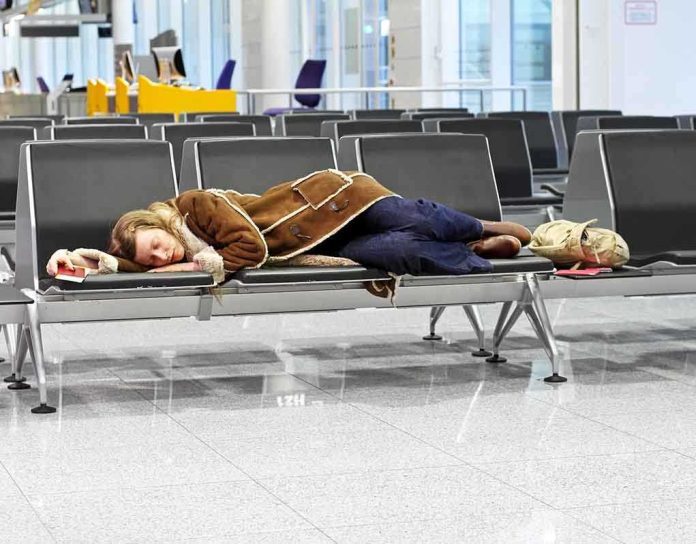
A drone or a balloon? The mysterious object that brought Europe’s aviation hub to a standstill has sparked more questions than answers.
Story Overview
- Schiphol Airport’s runway closed for 45 minutes due to unidentified flying object.
- Heightened security concerns due to increasing drone activities in Europe.
- The identity of the object remains unknown, raising questions of potential foreign involvement.
- Aviation experts call for improved detection and regulatory measures.
Drone Disruption at a Major European Hub
Amsterdam Schiphol Airport faced an unexpected halt when an unidentified flying object—whether a drone or a balloon—was reported dangerously close to a Transavia aircraft. This led to the temporary closure of the Polderbaan runway for approximately 45 minutes. Despite a swift response involving security forces and a helicopter, neither the object nor its operator was found. This incident adds to a growing list of airspace violations across northern Europe.
Drone sightings near airports have become a significant concern, reminiscent of the 2018 Gatwick Airport shutdown. Despite increased surveillance and regulatory measures, unauthorized drone activities persist, causing operational disruptions. In recent weeks, similar incidents have been reported in Denmark, Norway, and other northern European countries, some linked to Russian-origin drones. The Schiphol incident occurred amid these heightened security concerns.
Drone sighting shuts major European airport as thousands stranded https://t.co/XL857UyqiV pic.twitter.com/xvRDELcDlq
— The Independent (@Independent) October 3, 2025
Security Implications and Broader Concerns
The object’s ambiguous identity, whether a drone or a balloon, highlights the difficulty in distinguishing aerial threats. Occurring during a period of heightened drone-related disruptions, the incident raises fears about possible foreign involvement, especially given the regional context of suspected surveillance activities in the Baltic region. Schiphol, as one of Europe’s busiest airports, plays a critical role in regional and international air traffic. Any disruption here significantly impacts the broader aviation sector.
The incident has prompted aviation security experts to emphasize the need for advanced detection and mitigation systems. Some analysts highlight the challenge of distinguishing drones from other objects, complicating response protocols. The inability to conclusively identify the object or operator underscores the limitations of current detection and enforcement capabilities, raising calls for technological, regulatory, and international responses to the evolving threat landscape.
Impact and Industry Response
The Schiphol incident resulted in temporary flight disruptions, stranding thousands of passengers. In the long term, it may lead to increased scrutiny of drone regulations and enforcement, with potential for stricter airspace controls and surveillance. Financial losses due to flight delays and cancellations may also occur, alongside an erosion of public confidence in airport security. Political pressure for enhanced counter-drone measures and international cooperation is likely to grow.
The broader industry faces a renewed debate over the integration of drones in controlled airspace. This could result in potential delays in commercial drone adoption for legitimate uses at airports. Experts call for harmonized European regulations and real-time information sharing to address the challenge of balancing drone innovation with airspace safety. Diverse perspectives exist, with some suspecting hobbyist activity, while others warn of possible state-sponsored surveillance or sabotage.










